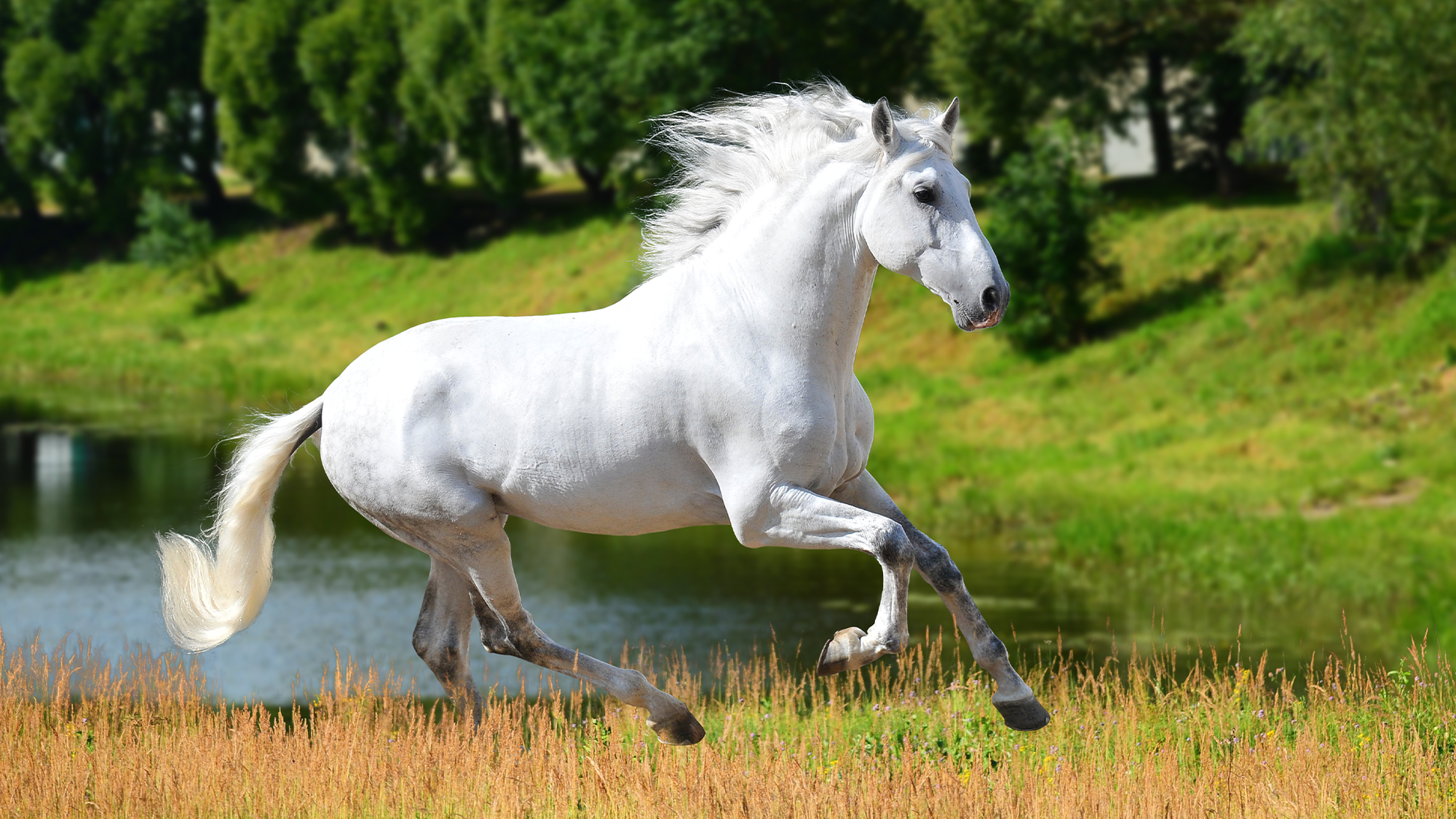

While both humans and horses can sport shoes, our equine friends don’t need to worry about maintaining their toes. However, that was not always the case. A new literature review published on June 21 in the journal Royal Society Open Science demonstrates how the distant ancestors of modern horses actually had multiple hoofed toes. Over time, these toes vanished—leaving the singular hoof.
[Related: A centuries-old horse tooth holds clues to the mystery of the Chincoteague ponies.]
The earliest horse ancestors started popping up in the fossil record around 56 million years ago. Most early horses sported three full-sized toes touching the ground, with the Eocene era’s Hyracotherium boasting four front toes like the modern tapir. While their three toes touched the ground, the middle toe did most of the heavy lifting, with the side toes dangling off the ground, unless it was time to jump or quickly run.
Present-day equids, including horses, donkeys, and zebras, have only a single toe. The leftover original middle toe on each foot is encased within a thick-walled keratinous hoof. To help absorb shock as the horse walks, trots, or gallops, a triangular and highly elastic hoof-part called a frog sits on the sole of the hoof.
An international team of scientists from institutions in the United Kingdom, the United States, and the Netherlands analyzed hoof prints and foot bones from modern horses and fossil records to look closer at what happened to the lost digits over time.
“The upper portions—the remains of the additional hand and foot bones—remain as ‘splint bones’ fused with the remaining central one, but where are the fingers and toes?” study co-author and University of Bristol paleontologist Christine Janis said in a statement. “In later fossil horses there were only three toes front and back. The extra toes, known as side toes, in these horses were smaller and shorter than in a tapir, and likely did not touch the ground under normal circumstances, but they may have provided support in exceptional situations, such as sliding or forceful impact.”
The team’s findings confirm an older notion that these toes truly have been lost as the animals evolved, and are not somehow retained within the hoof. This hoof-theory was proposed in a paper also published in Royal Society Open Science in 2018
“Although it does seem that remainders of the proximal (upper portions) of the side digits have been retained in modern horses, as the earlier 2018 paper claimed, the distal (lower portions, or toes) have simply been lost,” study co-author and St. John’s Seminary biologist Alan Vincelette said in a statement.
[Related: People may have been riding horses as early as 5,000 years ago.]
The 2018 paper proposed that the side toes in modern horses are retained within the hoof of the central toes, which partially contributes to the foot’s frog. This theory was partially based on an interpretation of hoof prints from an extinct three-toed horse, Hipparion. This equine is on the direct line to modern horses and the roughly 3.7 million year old fossil was found in Laetoli, Tanzania. This same fossil site is home to the famous footprints of the hominid Australopithecus.
Hipparion’s hoof prints apparently lacked a frog on the hoof, which added weight to the idea that the side toes of older horses now contribute to the stretchy frog of modern horses. Not all hoof prints from modern horses with frogs show its presence, meanwhile the frog can be seen in many hoof prints known to have been made by three-toed horses.
“While the notion that modern horses have retained all of their original toes as within-hoof remnants is a novel one, and so rather appealing, it can be shown to be incorrect,” said Janis.
The team believes that the frog of the horse’s hoof evolved independently of the side toes. This unique structure provides the animal with both traction and shock absorption during movement.
Additionally, the feet of one-toed horses have a different shape from the main toe than those of three-toed horses: this powerful toe is round instead of oval-shaped. This difference in shape is possibly related to differences in ecological habitat, or possibly weight distribution.
